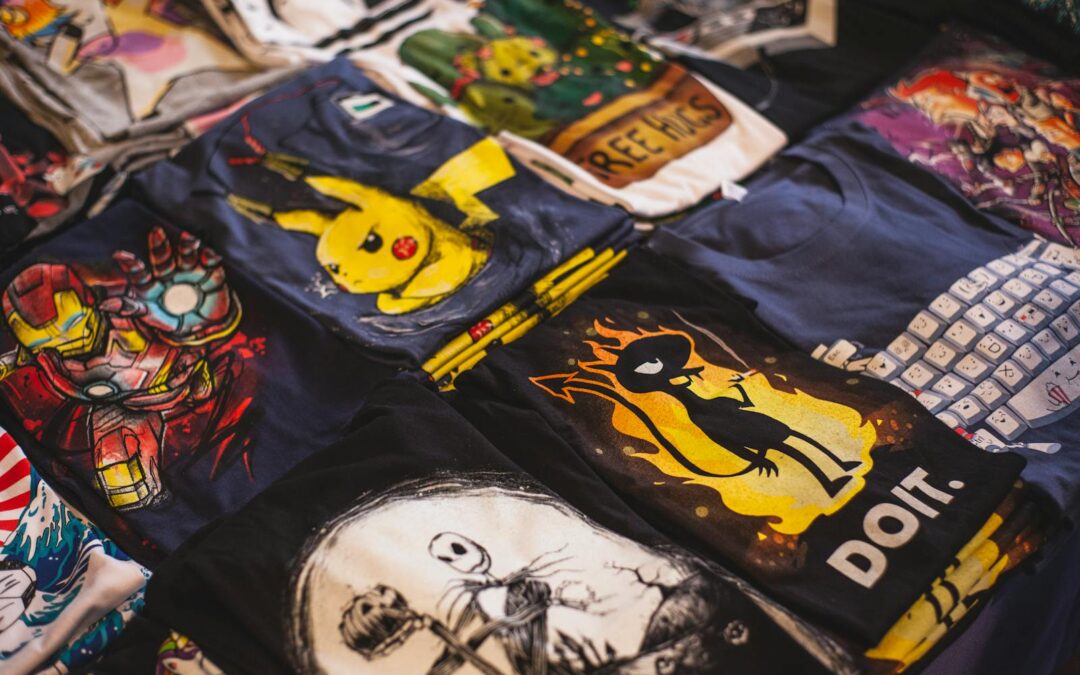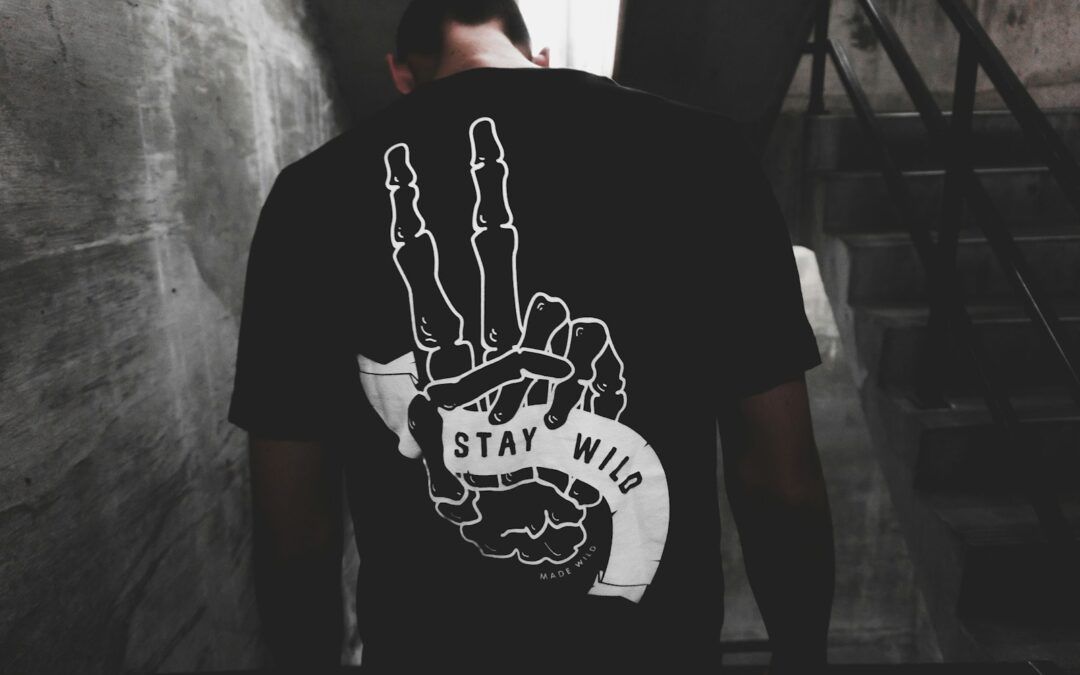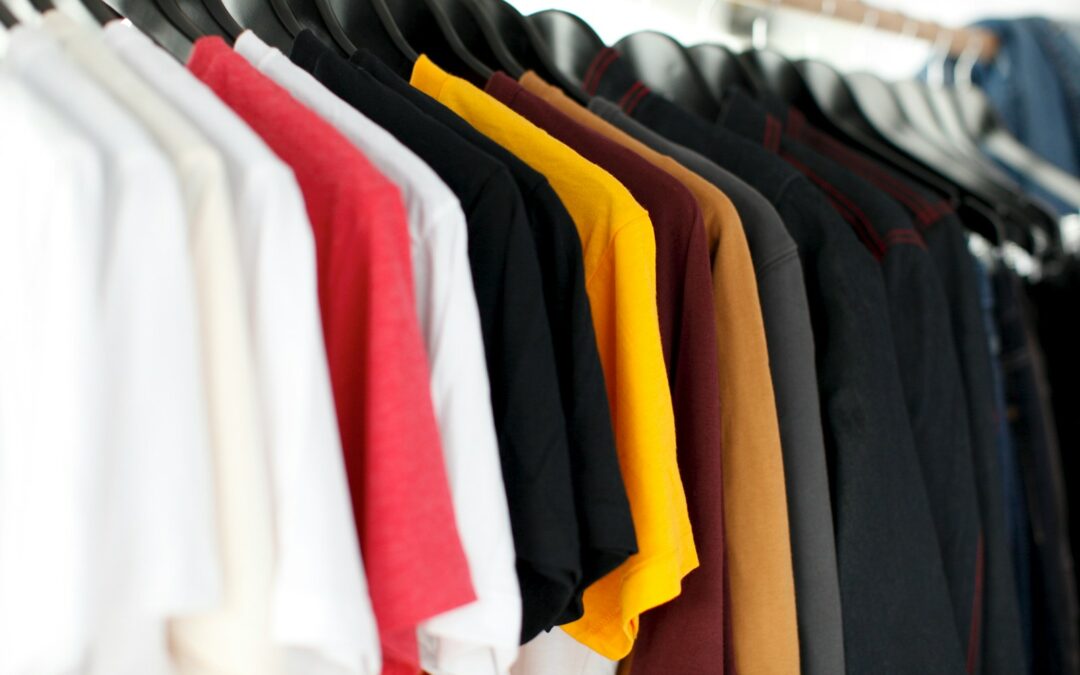What is DTF transfer printing?
Printing technology has evolved tremendously over the past few decades, from traditional screen printing to advanced digital printing methods. One such method that has become increasingly popular among garment printing businesses is direct to film transfer printing, commonly referred to as DTF printing. This modern printing technique is a game-changer for printing high-quality designs on different fabrics and materials.
In this blog post, answer the question “what is DTF transfer printing?”, and compare it against the top 4 alternative printing methods available. Whether you’re planning to start a printing business or an entrepreneur who wants to print customized merchandise, this guide is for you.
What is DTF Transfer Printing?
Direct to film (DTF) transfer printing is a straightforward and swift method for transferring designs onto fabric utilizing a special film sheet. The DTF printing process begins with the transfer of the graphic onto a unique film using DTF-specific inks and a DTF printer. This printer uses a thin, transparent PET transfer film, around 0.75mm thick, to print DTF transfers.
After the design is printed onto the PET film, it’s coated with a layer of hot melt adhesive powder, which clings to the wet ink, forming a sturdy bond that can withstand the heat press process. Once the custom DTF prints are prepared, they can be applied to a broad range of materials using a heat press machine. The resulting prints are bright, high-definition, full-color designs with astounding precision.
Benefits of DTF Printing
Direct to film transfers are gaining increasing popularity in the printing industry due to their unique combination of affordability and quality, catering to both small and large-scale orders. One of the instrumental factors contributing to this cost-efficiency is DTF’s ability to print an array of designs on a single sheet. This advantage makes it a perfect fit for bulk orders encompassing diverse designs, enhancing customizability and reducing waste.
The transfers produced through direct to film printing are acclaimed for handling intricate designs with finesse, positioning them as a preferred choice among designers and printers. Their ability to reproduce complex patterns with high precision makes them stand out in the industry.
Durability is another cornerstone of DTF transfers. With prints that can endure regular washes and continual wear, they offer lasting quality that outperforms many other printing methods. These resilient prints maintain their vibrancy and structure on a wide variety of fabrics, adding to their appeal.
Can I Create DTF Prints at Home?
Yes, you can create DTF prints at home, but it’s crucial to remember that the quality of the print can depend greatly on the type of printer and the ink used. While it is technically feasible to modify a desktop inkjet printer for DTF printing by using specialized DTF inks, the final print quality might not live up to professional standards or expectations.
This is largely due to the fact that standard desktop printers are not originally designed for DTF printing. Therefore, their conversion may not result in optimal print performance and could even lead to technical problems in the long run. Also, the ink used in these printers might not be as long-lasting or vibrant as the inks used in commercial-grade DTF printers.
If you’re an enthusiast looking to explore DTF printing at home, the best option might be ordering pre-made DTF transfer sheets online. Numerous suppliers offer custom printed DTF transfer sheets with your chosen design. At Limitless Transfers, we offer superior DTF transfer prints that you can apply at home with a simple heat press application. Our DTF transfers ensure high-quality results without requiring significant investment in professional-grade printing equipment.
Remember, the result of DTF printing largely depends on the quality of the materials used, so it’s worth investing in high-quality transfer sheets or printing materials to get the best results.
DTF Printers Offer Simplicity and Superior Quality
Simplicity is an inherent characteristic of DTF printers and transfers. Their user-friendly approach makes it easy for beginners, hobbyists, and small business owners to navigate the printing process. In addition to their practical benefits, DTF transfers champion eco-friendliness. They employ non-toxic inks and significantly reduce water usage, promoting a more sustainable printing process. This commitment to environmental consciousness further amplifies their acceptance in the industry.
Quality remains at the forefront of DTF transfers’ advantages. They are renowned for delivering prints with vibrant colors and high-resolution images. DTF print quality retains its charm over time, ensuring that the prints continue to impress with their enduring brilliance.
DTF heat transfers offer a comprehensive solution that amalgamates affordability, quality, durability, user-friendliness, and eco-consciousness. Whether you’re starting a new project or exploring more efficient printing methods, DTF transfers’ countless advantages make them a choice worth considering. Now that you can answer “what is DTF transfer printing?” and know the benefits, let’s explore how DTF compares to other popular printing methods.

How Does DTF Printing Compare to Screen Printing?
Screen printing, a method dating back to ancient China, has been a reliable choice in the printing industry for years. While it indeed delivers robust color saturation and a unique hand feel, it’s not without its limitations.
To begin with, screen print transfers are most economically viable for large-scale productions, making it less suitable for smaller or individual orders. The setup process is time-consuming, necessitating the creation of a new screen for each design, which often makes it impractical for projects with multiple designs. Besides, it poses color limitations, restricting the number of colors that can be used per design due to the need for a separate screen for each color. The cleaning process, too, is tedious, often involving the use of chemicals that may harm the environment.
On the contrary, DTF heat transfers introduce a new level of flexibility and versatility into the printing world. DTF printing enables the use of various colors on a single design, opening up a wide range of creative possibilities. Furthermore, it allows for extensive customization, accommodating a variety of design specifications that are otherwise challenging to achieve with screen printing. Therefore, DTF heat transfers represent an innovative advancement, providing solutions to many limitations associated with traditional screen printing.
What is DTF Transfer Printing in Comparison to DTG Printing?
Direct to garment printing (DTG) is a digital printing technique that directly imprints a digital image onto textiles using specialized or modified inkjet technology. This technique is particularly effective for small-scale productions, making it an ideal choice for personalized printing needs.
The ability of DTG to accurately represent intricate designs and vibrant, full-color prints contributes to its popularity in the garment printing industry. One of the clear advantages of DTG printing is its high-resolution output. This technology can recreate detailed designs with a great level of precision, making it suitable for reproducing high-resolution images and photorealistic designs on garments. DTG also excels in color management, offering a wide color gamut that can manage a spectrum of hues, shades, and gradients.
Despite these benefits, DTG printing has its downsides. Foremost among these is the substantial initial investment required for a DTG printer, which can be a significant financial barrier for small businesses or startups. The maintenance costs of a DTG printer are also relatively high, encompassing regular cleaning, ink replacement, and spare parts. Another potential drawback of DTG printing is the longevity of the print. While the initial print quality is impressive, the durability of DTG prints tends to be inferior to that of DTF prints. Over time, DTG prints may fade or deteriorate with regular washing and wear.
DTG also has limitations with the type of fabric it can be used on. It works best on 100% cotton substrates and may not produce the same high-quality results on synthetic materials. On the other hand, DTF printing, with its ability to transfer designs on various materials, including cotton, polyester, and blends, provides a more versatile alternative. While DTG printing has its unique benefits, the high costs of operation, maintenance, and the longevity issues with the prints may make DTF a more appealing option for many garment printing applications.
What is DTF Transfer Printing in Comparison to Heat Transfer Vinyl Printing?
When embarking on any fabric printing project, the printing method you choose plays a pivotal role in determining the quality, durability, and aesthetic appeal of the end product. Two methods that often become the center of comparison are heat transfer vinyl (HTV) printing and direct to film (DTF) printing.
As an individual who has worked extensively with both techniques, my preference leans heavily towards DTF printing, and I’ll explain why. DTF printing offers a pronounced edge in terms of print quality. It delivers sharper prints that stand out due to their vibrancy and richness in color. The prints are not only visually appealing, but also demonstrate superior durability. Unlike HTV printing, where the transfer may crack or peel over time, DTF prints have a long lifespan, retaining their high-quality appearance through numerous washes and wear.
The process of DTF printing, which eliminates the need for intermediate transfer paper, is another aspect that makes it stand out. This direct method reduces the likelihood of errors during the printing process, ensuring a smoother operation and ultimately, better results. In addition to these practical benefits, DTF printing also brings environmental advantages to the table. In contrast to heat transfer vinyl printing, which can have a significant environmental footprint, DTF printing is a more eco-friendly option. The DTF printing process uses less energy and resources, making it a more sustainable choice in the long run.
What is DTF Transfer Printing in Comparison to Sublimation Printing?
When contrasted with sublimation printing, DTF has several noteworthy advantages. The process of DTF printing is typically faster, allowing a quicker turnover of orders and thereby increasing efficiency. This becomes particularly beneficial in a large-scale production scenario, where time is a crucial factor.
Sublimation printing, while offering quality prints, is often more time consuming and can be more expensive due to the high cost of sublimation inks and papers. Additionally, sublimation printing is limited by the type and color of the fabric. It requires high polyester content and light-colored materials for the prints to fully appear vibrant.
On the other hand, with DTF transfer printing, there’s a broader scope when it comes to the choice of fabric. DTF prints can be applied onto a wide array of fabrics, regardless of their color or composition. This includes cotton, polyester, blend fabrics, and even dark materials, providing a level of versatility that is hard to match.
Furthermore, DTF printing offers a higher level of detail reproduction. Even the most complex and detailed designs are smoothly transferred onto fabric, with sharp outlines and vivid colors that stay intact even after multiple washes. This makes DTF an ideal choice for artists and designers seeking to reproduce their artwork in the most accurate and durable way on garments.
What is DTF Transfer Printing? Conclusion
In the ever-evolving landscape of printing technology, direct to film (DTF) transfer printing emerges as a versatile, cost-effective, and high-quality solution. Its superior print quality, eco-friendliness, and extensive applicability make it a preferred choice for many printing applications, outshining conventional methods like screen printing, DTG, HTV, and sublimation printing.
As we have seen, DTF printing offers several advantages, including the ability to handle intricate designs, vibrant color representation, and exceptional durability — all while being a more environmentally conscious method. Whether you’re a hobbyist, a small business owner, or planning to scale up your printing operations, DTF printing could be the solution you’ve been looking for.
So, as you embark on your next fabric printing venture, we encourage you to explore the limitless possibilities of DTF printing, a technology truly revolutionizing the custom printing industry. Remember, the right printing method can make all the difference in ensuring your designs come to life in the most vibrant and enduring manner. If you’re seeking superior DTF transfers which do not necessitate hefty equipment, look no further than Limitless Transfers – your premier choice for quality and convenience.











